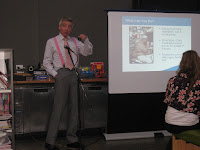All good stuff in this rather modern age of consumption and online socialisation, but the big question looms large - how far will people go in the name of social type involvement with a brand? Naturally the first consideration is about how much they like or possibly even love a particular brand... I am a little loathe to spend time with people that either I don't like very much or don't have much in common with. (no big surprise there!)
But what has been really niggling me is how to work out the potential level of involvement. Not all people are the same... some people are loud and opinionated, some are silent types and keep their opinions to themselves, some people like to make their own path in life, some prefer to follow the crowd. So how do these things vary when comparing behaviour in the analogue world to the digital world?
There are a few good theories on the debate...They aren't shiny new by any means but nonetheless, worth sharing. 90-9-1 is a good rule of thumb simply stating that some people participate more than others. researcher Jakob Neilsen calls this participation inequality. The theory goes that:
- 1% of the online community are CREATORS of content, happy to start things from scratch like websites, blogs and networks
- 9 % of the online community are comfortable as being EDITORS and chipping in or adding to ideas, forums and posting comments
- 90% of the online community are more comfortable LURKING, reading or observing than having to make a contribution.
Forrester have also developed what they are calling a 'social technographicss framework that poses a different set of participation statistics around populations based on their data which is based on a way of looking at this area. Check out their 2009 tool to get a breakdown based on a few demo inputs
So in getting back to the question, asuming you havea good idea to start with, you can apply a framework like Forresters and get a rough idea of the number of participants you can expect.
I quite like the recommendation from http://www.90-9-1.com/ around ways to make participation easier which I have stolen below... this is the abreviated version so check out the site for the full lowdown.
- Make contributing easy for everyone.
- Encourageediting over creating - blank pages are scary.
- Reward participants.
- Go easy on the rewards, but certainly bake them into the process of participation.
- Identify both power users and up and coming users.






 Leigh talked to the importance of staying in touch with bigger consumer trends with the example of how butter was the bad guy of spreads in the 90’s but a shift in health trends where consumers want to know what’s in their food has seen a return to butter as the natural alternative to margarine.
Leigh talked to the importance of staying in touch with bigger consumer trends with the example of how butter was the bad guy of spreads in the 90’s but a shift in health trends where consumers want to know what’s in their food has seen a return to butter as the natural alternative to margarine.


.jpg)
.jpg)
























